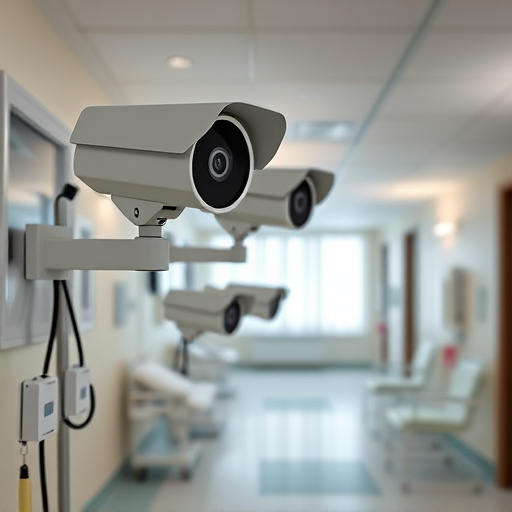Implementing cameras in nursing homes is a vital strategy to enhance resident safety, deter abuse, and facilitate swift emergency responses. These surveillance systems come in various types (fixed, dome, wireless) to suit different monitoring needs. While they offer numerous benefits, installing them requires careful consideration of privacy concerns, strategic placement, and adherence to legal guidelines regarding video footage handling, especially with strict regional regulations in place.
Nursing home security cameras have become indispensable tools for ensuring resident safety, privacy, and well-being. With an aging population and increasing incidences of abuse and neglect, implementing comprehensive surveillance systems is crucial. This article explores the importance of cameras in nursing homes, delving into types and strategic placement for optimal protection. We also navigate privacy concerns and legal considerations to help facilities make informed decisions regarding camera installation, ensuring a balanced approach to safety and respect for resident autonomy.
Understanding the Importance of Security Cameras in Nursing Homes
In today’s digital era, implementing cameras for nursing homes has become an indispensable aspect of ensuring resident safety and security. These surveillance systems serve as a crucial tool to monitor activities within the facility, providing peace of mind for both residents and their families. With an increasing elderly population and rising concerns about elder abuse, neglect, or wandering, having robust security measures in place is essential.
Nursing home security cameras offer a multitude of benefits. They act as a deterrent to potential inappropriate behavior or criminal activities, allowing staff to respond swiftly to any emergencies. Additionally, these cameras facilitate better resident monitoring, especially for those with dementia or prone to wandering, ensuring they remain within safe boundaries. Through remote access and advanced features like motion detection and night vision, caregivers can efficiently manage the facility’s overall security.
Types and Placement Strategies for Effective Surveillance
Nursing home security cameras come in various types, each offering unique features and benefits for enhancing surveillance. Among the most common are fixed cameras, which provide clear, panoramic views and can be strategically placed to cover key areas like entry points, common spaces, and resident rooms. These cameras offer reliable, 24/7 monitoring and record high-quality footage for future reference.
For comprehensive coverage, dome cameras are another popular choice. Their design allows them to capture a wide field of view, making it easier to monitor multiple zones simultaneously. Placement strategies for these cameras should focus on high-traffic areas and those with potential safety risks. Additionally, wireless cameras offer flexibility in installation, as they don’t require complex wiring, facilitating quicker set-up and reduced disruption to the facility’s layout.
Privacy Concerns and Legal Considerations for Camera Installation
The installation of security cameras in nursing homes raises important privacy concerns, especially regarding the elderly residents and their families. With an increasing number of healthcare facilities adopting surveillance systems as a safety measure, it’s crucial to balance the benefits of enhanced security with the protection of personal privacy. Cameras for nursing homes must be strategically placed and operated ethically to ensure resident comfort and maintain confidentiality.
Legal considerations play a significant role in this context. Many regions have strict regulations regarding video surveillance, particularly in care facilities. These laws often require consent from residents or their legal guardians before installing cameras, and they also dictate the purpose of monitoring, storage, and access to recorded footage. Healthcare providers must stay updated on these regulations to avoid legal complications and ensure compliance when implementing cameras for nursing homes.
